Montessori-Inspired Learning Basket Activities for 6 Year Olds
In this post, I’ll be sharing with you some of the Montessori-inspired learning basket activities that my 6-year-old is working with each month.
What is a Homeschool Learning Basket?
Learning baskets are our laidback version of a Montessori work plan. They foster self-directed learning, provide students with freedom of choice, and gently introduce children to organization and planning techniques. Best of all, we can easily take our school materials with us, whether that’s to our living room, the dining room, or outside.
Every couple weeks, my children select what materials from their homeschooling shelves to place into their learning baskets. Together, we’ll also discuss any lessons or concepts they need to practice, and then find materials to support those learning objectives. Their baskets also contain a few workbooks that are used for daily and/or weekly practice, things like copywork, editing, and reading comprehension activities.
Don’t forget to pin this for later!

What Do You Use for a Learning Basket?
We’re currently using felt diaper caddies to serve as our learning baskets. I love this one because it has a space that’s large enough to hold books, plenty of small pockets on the outside for task cards and reference materials, and the front pocket fits our photo storage containers perfectly.
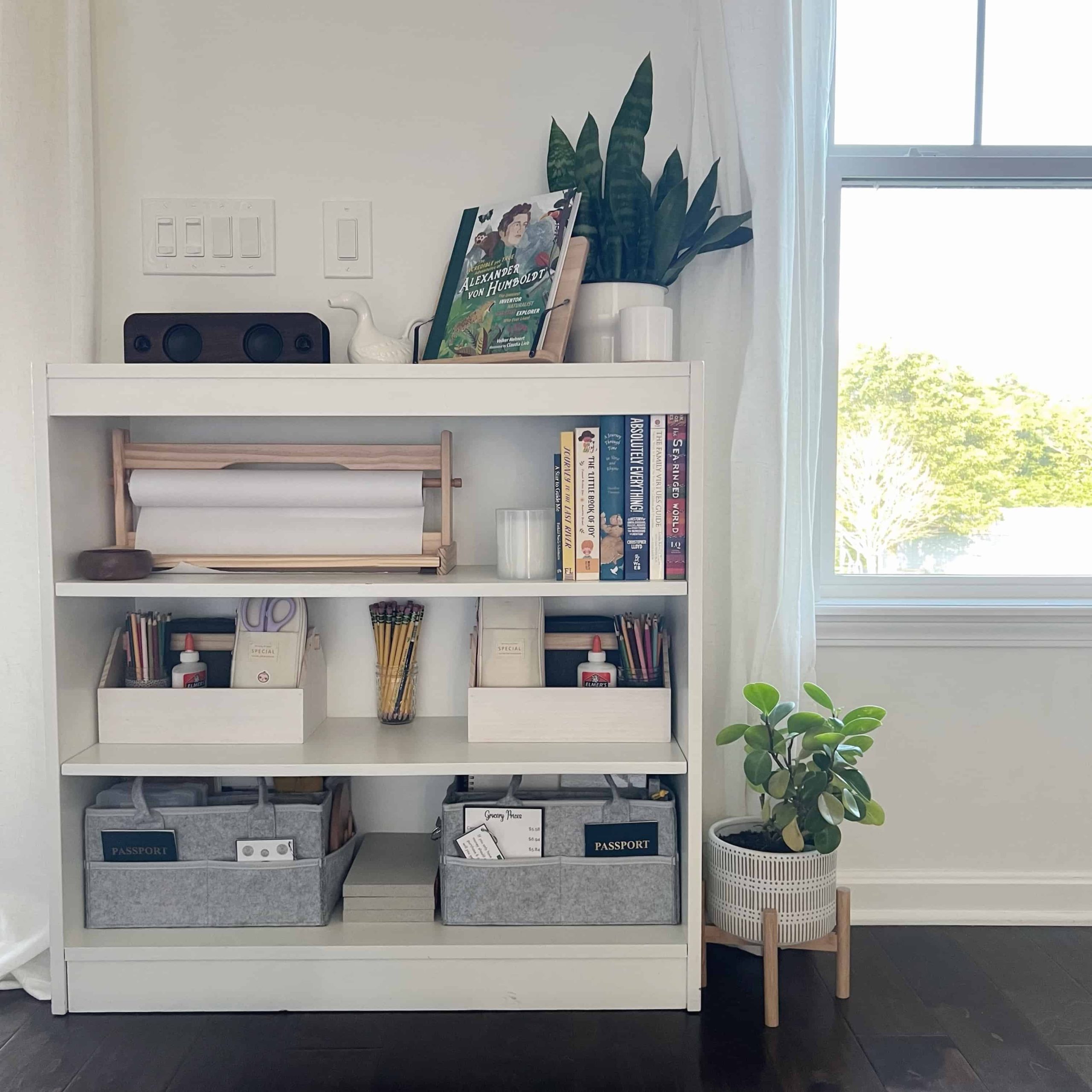

Disclosure: This post contains affiliate links at no cost to you. This means I may receive a small commission if you make a purchase using these links.
June
Math Activities

How Many Dots?
A pack of dice are used to play the game, “How Many Dots?” The objective is to figure out how many dots are showing among all the dice. She’s using the “Making Tens” strategy here to tally up the total number of dots. We’ll soon be using this same activity to practice multiplication.
Centimeter Cubes Scavenger Hunt
Here, she selects a random seek-and-find measurement card, builds the length using the cubes, and then has to find a object that measures that length. This is a fun scavenger hunt-type activity that helps children begin to estimate lengths.


Part-to-Whole U.S. Coin Cards
These cards help children become comfortable building different sums of money using a variety of coins. It’s great for kids to practice mental math, while learning a fundamental practical skill. My 6-year-old currently loves any math that involves money.
Task Cards
Here’s a few more math task cards that she’s selected for her basket this month. One focuses on addition and subtraction word problems. She enjoys the challenge of solving a couple of these each week. There’s also addition clip cards for dollars and cents, a target number game using coins, and some hundred board puzzle cards.


Infinity Street
This is a new activity for her this month. She’ll be working on building numbers on Infinity Street to become more comfortable reading and writing large numbers, in this case the populations of different countries.
Place Value and Rounding
Also new this month, the Infinity Street place value mat will assist her in learning the different place value positions and how to round numbers to different place value positions.
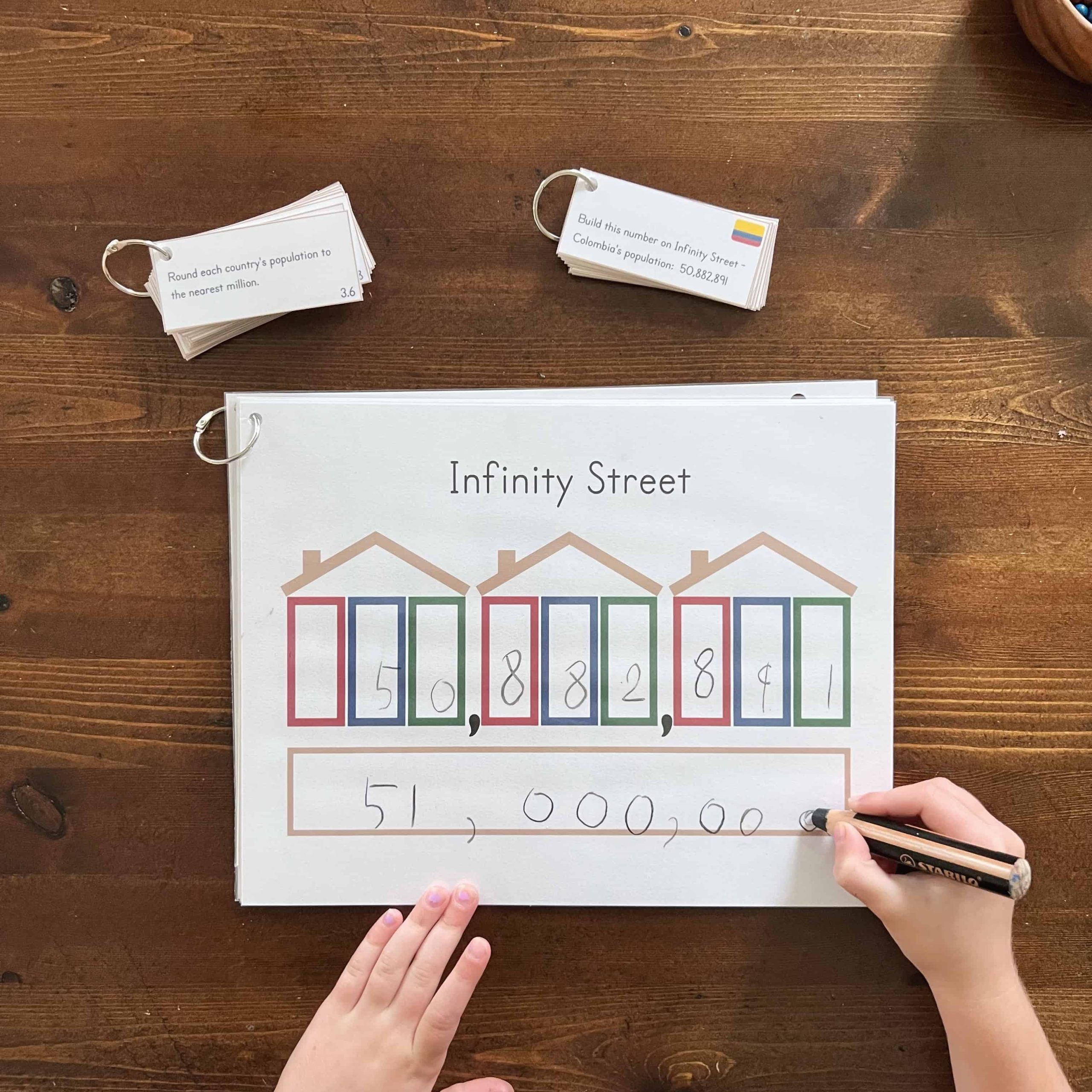

Rounding to the Nearest Ten
With this mat, she independently works with rounding to the nearest ten. This is a beginning rounding activity.
More and Less
She uses the More and Less mat for mental math practice. She uses dice to roll a number and then calculates 1 more, 1 less, 10 more, and 10 less and records her answers on the mat.


The Race to 100
A game she still enjoys playing is The Race to 100. We each select a different color counter and keep track of the equations on the side.
Tangoes and Telling Time
Tangoes Classic can be used independently, played cooperatively, or played competitively. We’re using the wooden clock to practice telling time. I typically spend about 3-5 minutes a couple times a week doing clock challenges with her.

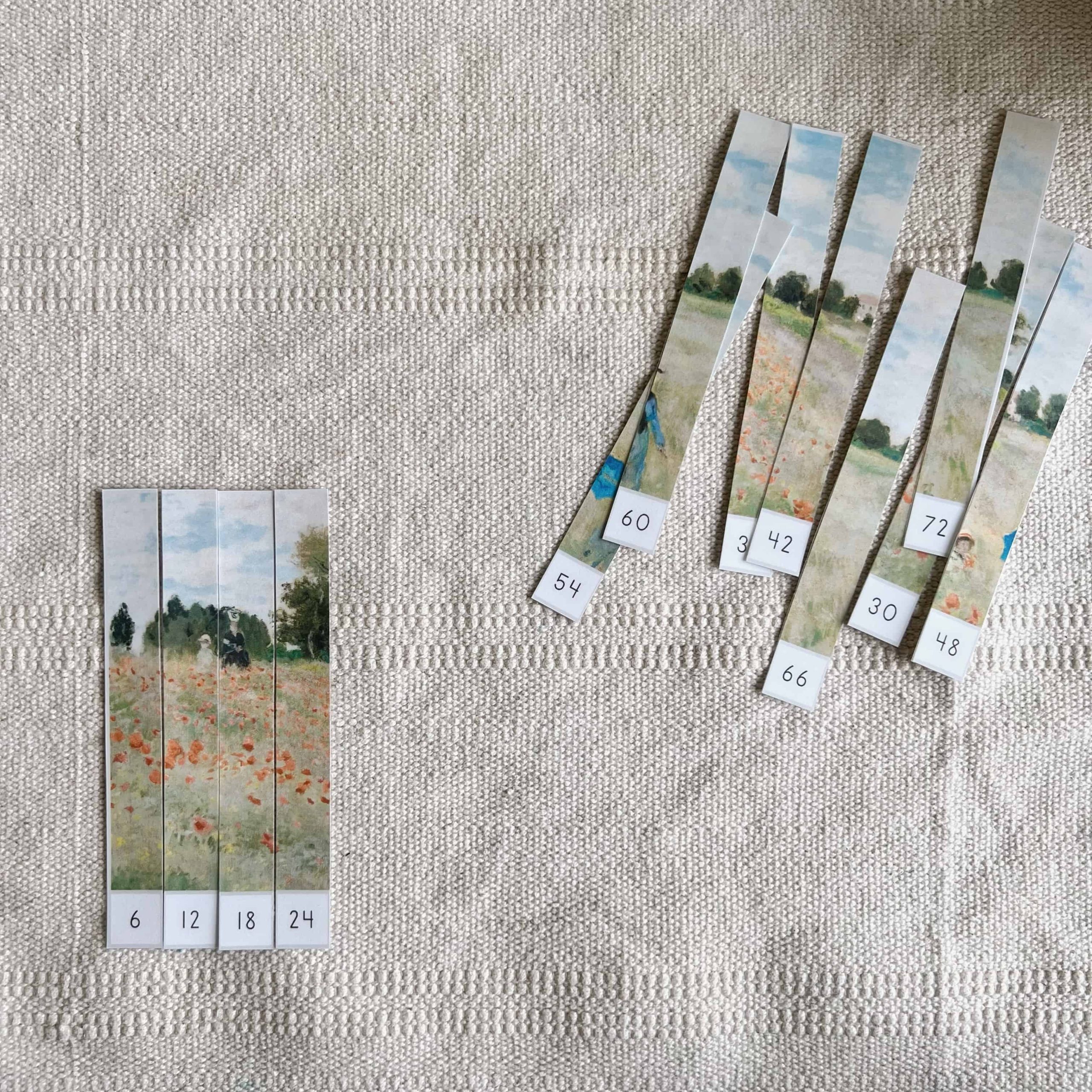
Skip Counting Puzzle
I swap a new skip counting puzzle into her learning basket each month. The puzzle supplements the Claude Monet linear calendar month that’s displayed in her room. For the month of June, she’s practicing counting by 6’s.
Language Arts Activities

Phonics Dominoes: Blends & Digraphs
Every week or two she selects a new color to place in her bin. This is a really quick and easy way to practice both blends and digraphs. We each select four dominoes, flip another one over as the starting piece, and the first to get rid of their dominoes wins.
Spot It: Digraphs
Here’s another game that focuses on reviewing digraphs. Played like the popular “Spot It!” games, she flips two cards over and races to find the matching digraph. In order to collect the cards, she has to say the digraph and/or come up with a word that has the digraph in it.

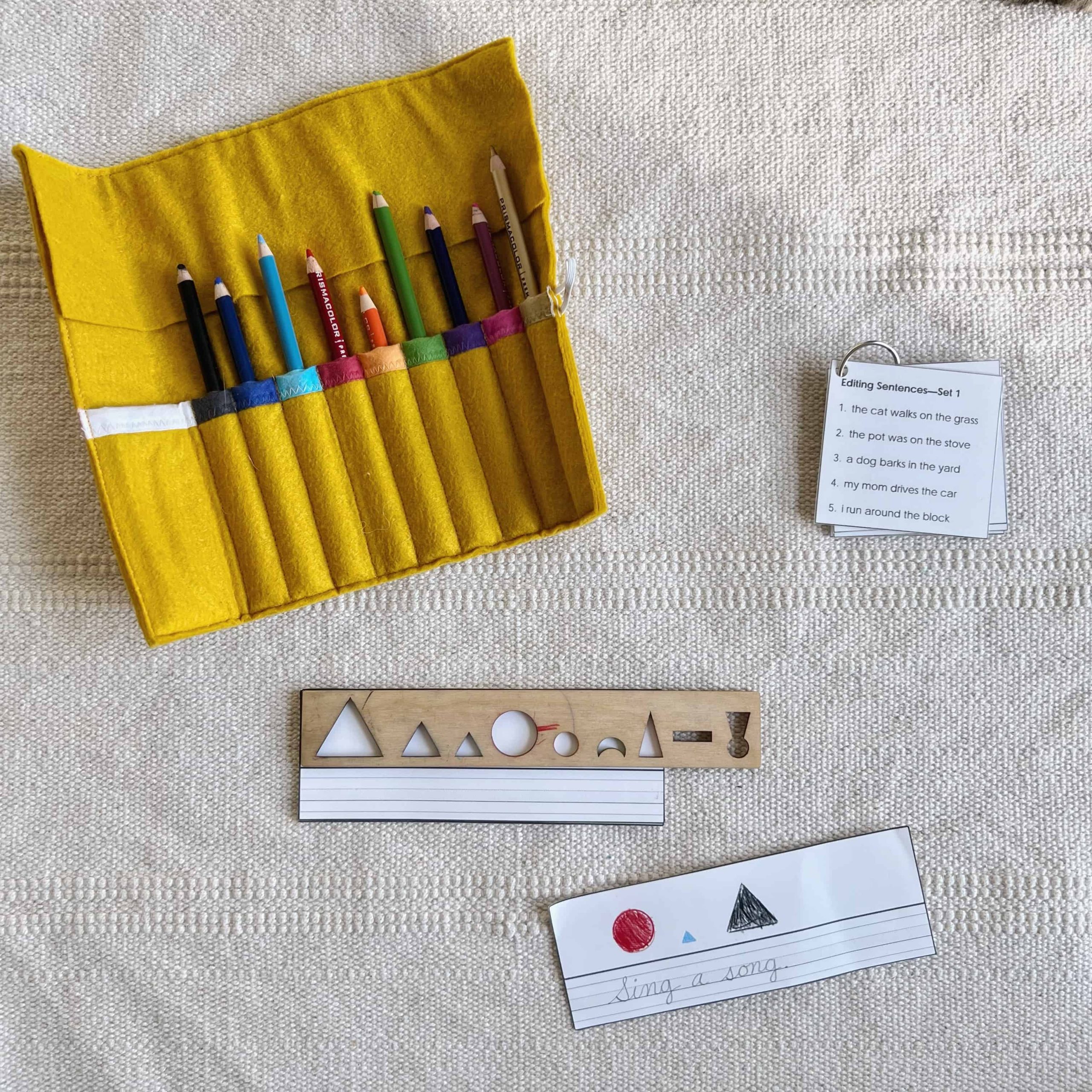
Montessori Grammar Symbols and Editing Sentences
While we do a silly sentence activity using the Montessori grammar symbols as part of our morning basket each week, this activity allows her to practice symbolizing sentences on her own. The editing task cards are new this month, and the first set focuses on capitalization and punctuation.
Aesop in Cursive
This is also new this month. We read a fable once a week, she provides an oral narration, and then she completes the copywork. She’s been eagerly looking forward to reading each of these fables with me and enjoys discussing them afterward.
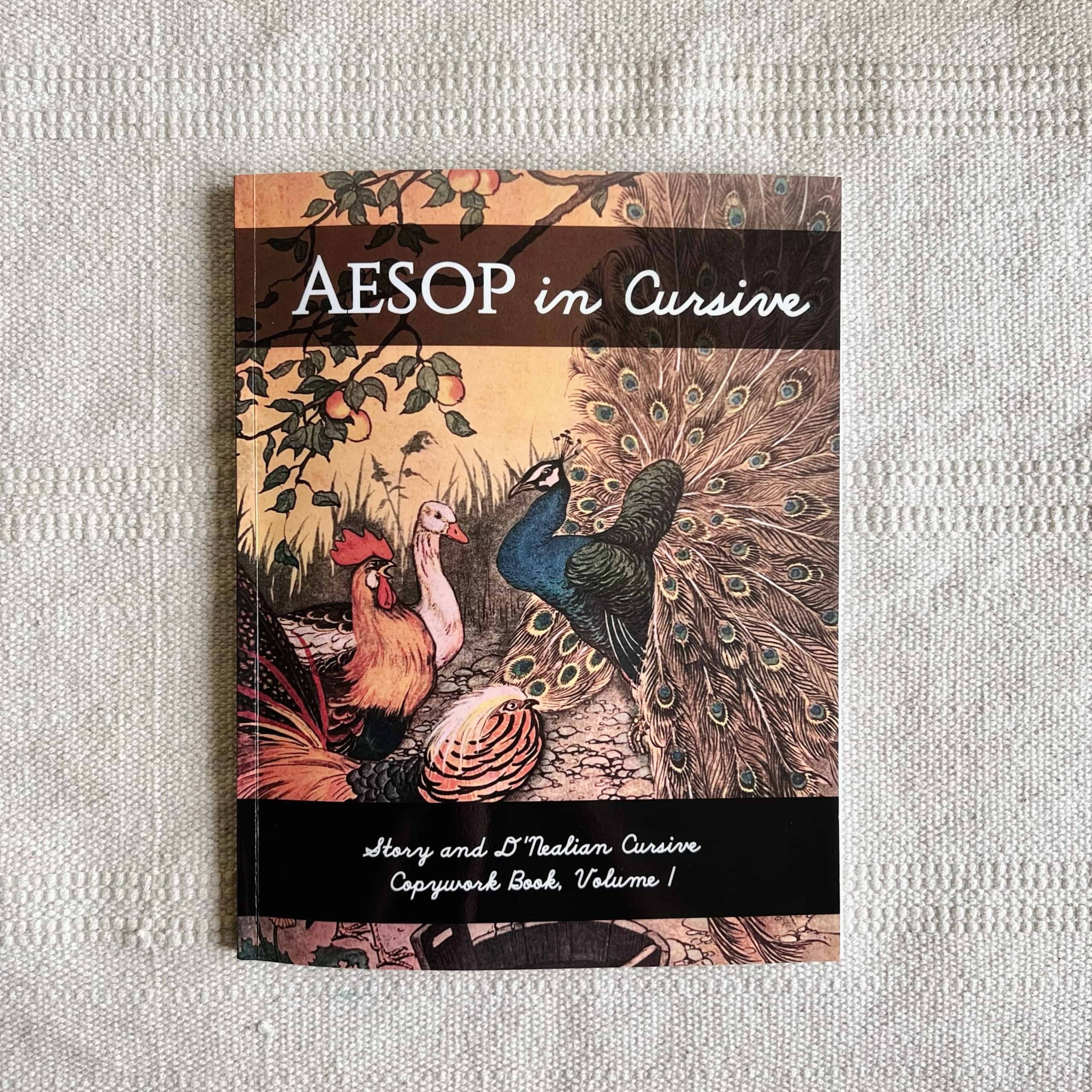
SHOP THESE RESOURCES
- 6-Sided Dice (100 Count)
- Wooden Centimeter Cubes (200 pcs)
- Part-to-Whole U.S. Coin Cards
- Addition and Subtraction Word Problems
- Dollars and Cents Addition Clip Cards
- U.S. Coins Target Number Cards
- Hundred Board Puzzle Cards
- The Global Explorers Club: Infinity Street Task Cards
- Math Mats
- Tangoes
- Wooden Clock
- Claude Monet Skip Counting Puzzles
- Phonics Dominoes: Blends and Digraphs
- Spot It: Digraphs Game
- Symbolizing Sentence Cards with Montessori Grammar Symbols
- Aesop in Cursive


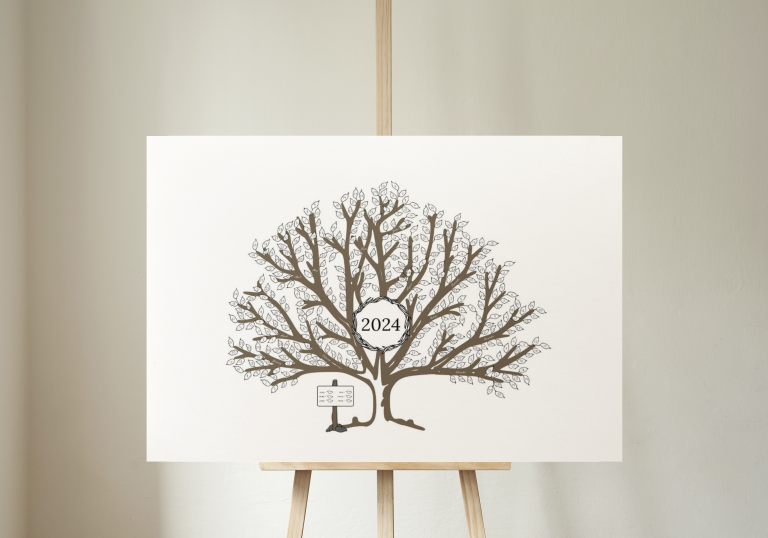
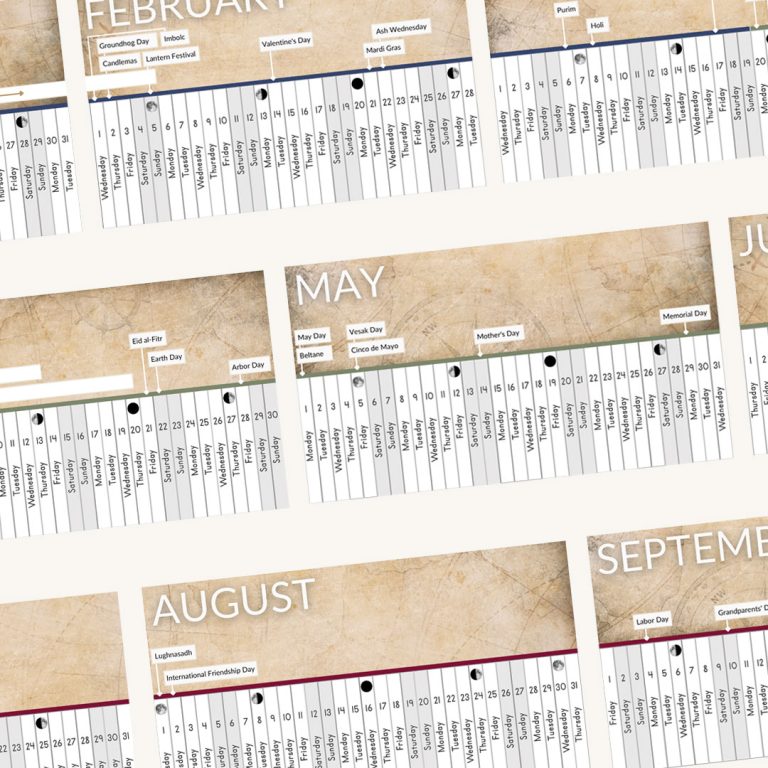

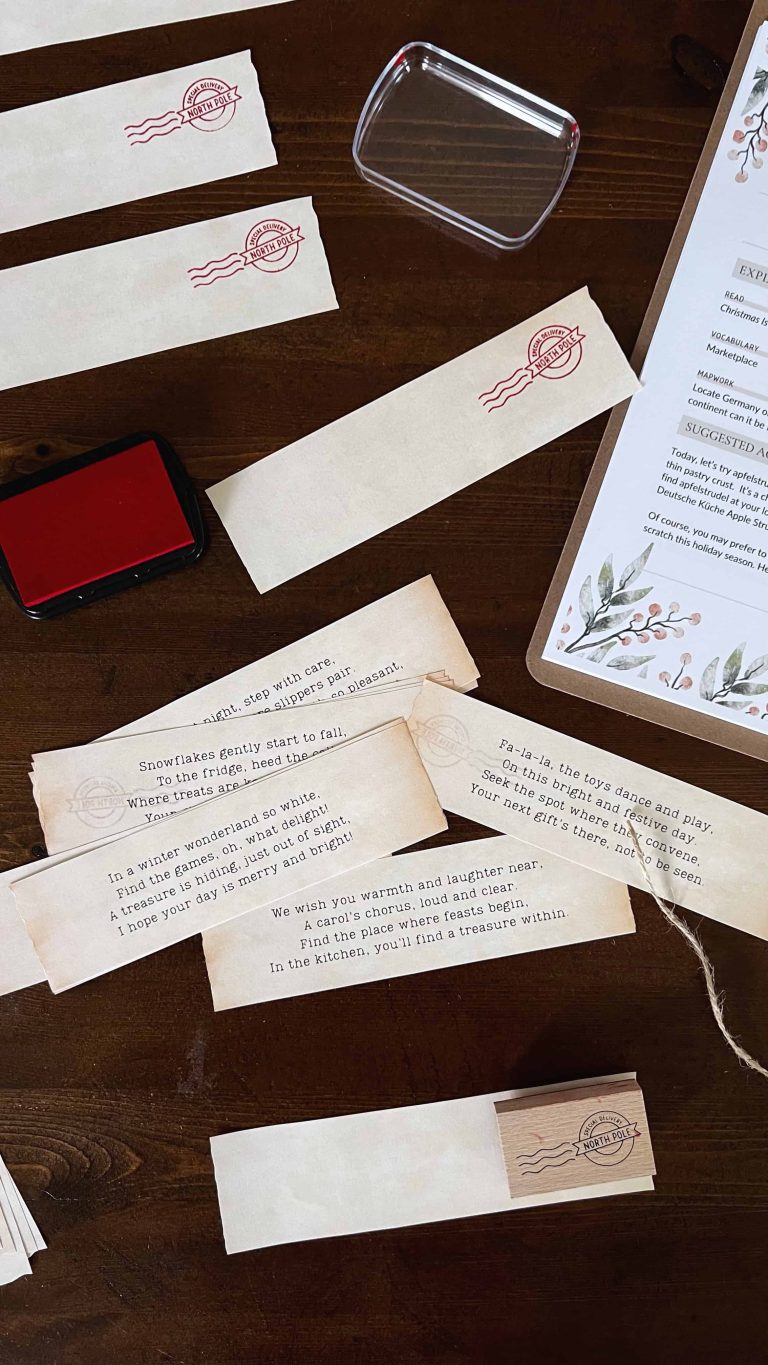
2 Comments
Comments are closed.